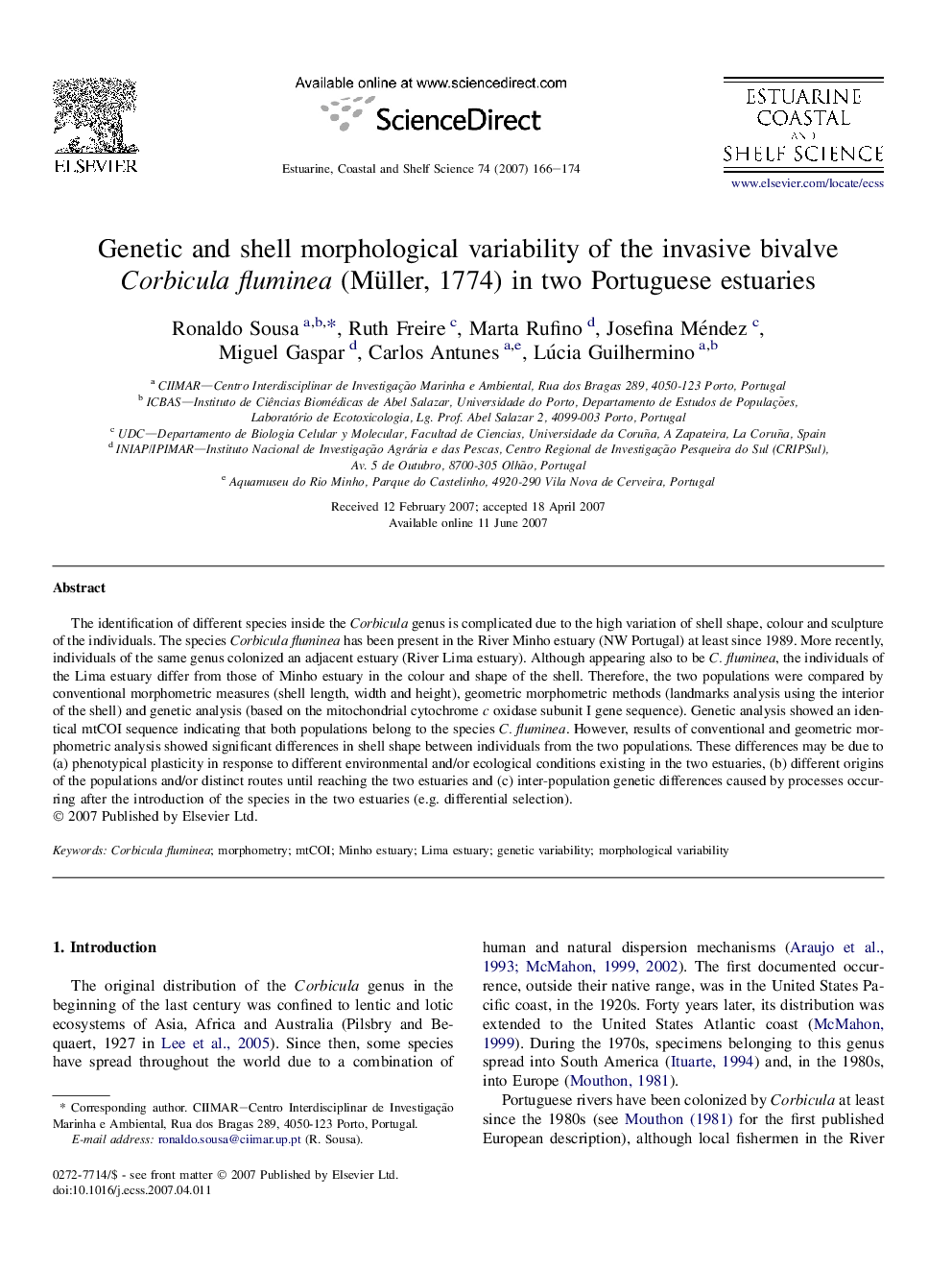| Article ID | Journal | Published Year | Pages | File Type |
|---|---|---|---|---|
| 4541757 | Estuarine, Coastal and Shelf Science | 2007 | 9 Pages |
The identification of different species inside the Corbicula genus is complicated due to the high variation of shell shape, colour and sculpture of the individuals. The species Corbicula fluminea has been present in the River Minho estuary (NW Portugal) at least since 1989. More recently, individuals of the same genus colonized an adjacent estuary (River Lima estuary). Although appearing also to be C. fluminea, the individuals of the Lima estuary differ from those of Minho estuary in the colour and shape of the shell. Therefore, the two populations were compared by conventional morphometric measures (shell length, width and height), geometric morphometric methods (landmarks analysis using the interior of the shell) and genetic analysis (based on the mitochondrial cytochrome c oxidase subunit I gene sequence). Genetic analysis showed an identical mtCOI sequence indicating that both populations belong to the species C. fluminea. However, results of conventional and geometric morphometric analysis showed significant differences in shell shape between individuals from the two populations. These differences may be due to (a) phenotypical plasticity in response to different environmental and/or ecological conditions existing in the two estuaries, (b) different origins of the populations and/or distinct routes until reaching the two estuaries and (c) inter-population genetic differences caused by processes occurring after the introduction of the species in the two estuaries (e.g. differential selection).
